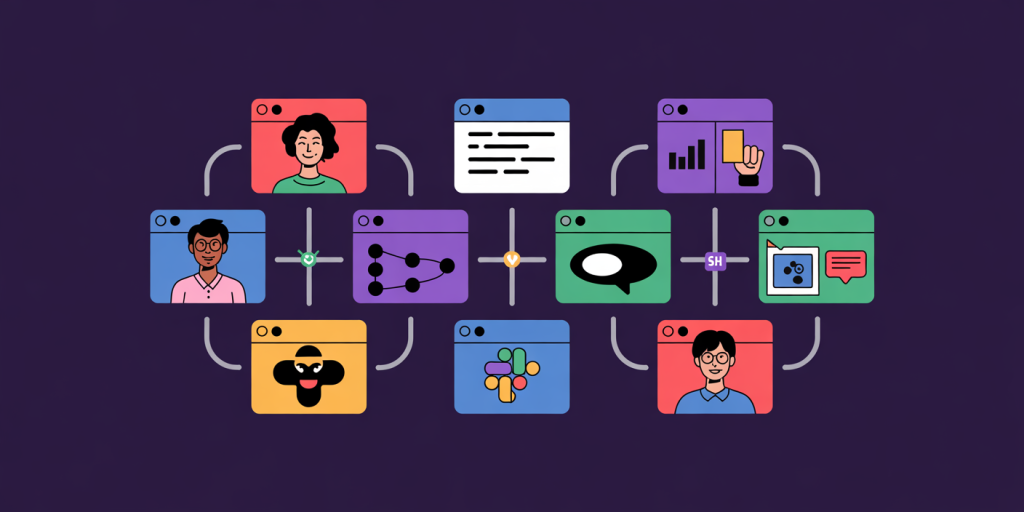In today’s increasingly global and digital work environment, remote teams have become the norm rather than the exception. While traditional synchronous communication methods such as video calls and instant messaging remain essential, asynchronous communication has emerged as a powerful strategy to boost productivity, flexibility, and inclusivity in distributed teams. Mastering asynchronous communication is no longer optional; it is crucial for organizations to thrive in a remote-first world.

The rise of remote work has fundamentally shifted how teams collaborate. According to a 2023 Buffer report, 97% of remote workers express a desire for some form of flexible, asynchronous communication to offset time zone differences and avoid constant disruptions. Asynchronous communication allows team members to share information, provide updates, and collaborate without needing to be online simultaneously, reducing meeting overload and promoting efficiency. However, mastering this form of communication requires deliberate strategies, tools, and cultural adaptations.
Understanding Asynchronous Communication: Beyond the Basics
Asynchronous communication involves sending messages or collaborating in a way that does not require an immediate response. Unlike synchronous communication methods — such as video conferences, live chats, or phone calls, where participants engage in real-time interactions — asynchronous communication allows for response timing flexibility.
Typical channels for asynchronous communication include emails, project management tools (e.g., Asana, Trello), shared documents (Google Docs), and internal wiki pages. For example, a software developer in Bangalore can update the status of a coding task on a project management platform, and their manager in New York can review the progress hours later without interrupting either party’s workflow.
One of the major advantages of asynchronous communication is its ability to respect different time zones. In multinational corporations like GitLab, which operates with a fully remote workforce across 65+ countries, asynchronous communication is the backbone of their operation. The company’s handbook extensively documents every process, enabling employees to find answers independently and contribute on their own schedules, enhancing clarity and reducing bottlenecks.
However, asynchronous communication is not entirely free of challenges. It demands strong writing skills, clarity of expression, and reluctance to engage in spontaneous exchanges, which can sometimes lead to misunderstandings or slower decision-making. Therefore, mastering asynchronous communication means balancing structure and flexibility while cultivating trust and transparency among team members.
The Benefits of Embracing Asynchronous Communication in Remote Teams
The shift toward asynchronous communication offers tangible benefits that impact productivity and employee satisfaction. Firstly, asynchronous methods reduce “meeting fatigue,” a growing concern among remote workers. According to Microsoft’s 2022 Work Trend Index, the average remote employee spends 60% more time in meetings compared to pre-pandemic levels. By substituting some meetings with well-crafted asynchronous updates, teams free up valuable time, allowing deeper focus on meaningful work.

Secondly, asynchronous communication promotes better inclusivity and diversity. People have different work rhythms, personal obligations, and preferred communication styles. Asynchronous tools accommodate those who may be introverted or require more time to digest information before responding. This inclusivity results in richer, more thoughtful contributions. For example, Automattic, the company behind WordPress, famously uses asynchronous communication to empower employees worldwide while supporting work-life harmony.
Moreover, asynchronous communication enhances documentation and knowledge sharing. When updates, decisions, and discussions are recorded in accessible platforms, they create a living knowledge base that new and existing team members can reference, reducing redundancy and miscommunication.
According to a 2023 study by Owl Labs, remote workers who use asynchronous communication tools report 25% higher job satisfaction and 30% better work-life balance. These statistics reflect how asynchronous communication can transform the remote work experience when properly implemented.
Best Practices for Effective Asynchronous Communication
Implementing asynchronous communication successfully requires a structured approach to avoid pitfalls such as miscommunication or delays. A primary best practice is to over-communicate and prioritize clarity. Unlike verbal conversations that allow immediate clarifications, asynchronous interactions depend on well-articulated messages. Using bullet points, headings, and summary sections helps convey information clearly and quickly.
Another essential practice is defining response expectations. Clear guidelines about when responses are required and what types of messages demand urgency can prevent misaligned assumptions. For instance, Slack allows setting “status” indicators or message tags like “urgent,” helping team members prioritize.
Additionally, integrating asynchronous communication with synchronous check-ins optimizes team dynamics. Some discussions, such as brainstorm sessions or conflict resolution, benefit from real-time interaction. Combining both methods ensures that teams accomplish complex tasks without losing the advantages of flexibility.
A practical example is how Zapier, an automation company with a remote-only workforce, balances asynchronous updates via written reports with scheduled video calls for strategic alignment. This blend prevents decision paralysis and nurtures interpersonal bonds.
Training and onboarding are equally important to instill best practices. Providing employees with communication templates and examples will improve message quality and consistency. This step is critical in diverse teams where language barriers or cultural nuances can cause confusion.
Tools That Empower Asynchronous Communication
Leveraging the right technology stack is crucial to mastering asynchronous communication. A wide variety of tools cater to different needs, such as messaging, project management, document collaboration, and knowledge management.
| Communication Need | Tool Examples | Key Features |
|---|---|---|
| Email & Messaging | Gmail, Outlook, Slack (threads) | Time-delayed responses, message threading |
| Project Management | Asana, Trello, Jira | Task assignment, status tracking, deadline reminders |
| Document Collaboration | Google Docs, Notion, Confluence | Real-time editing, commenting, version history |
| Knowledge Base & Wiki | GitLab Wiki, SharePoint | Centralized information repository, search functions |
| Video Messages & Recordings | Loom, Vidyard | Personalized asynchronous video updates and tutorials |
For example, many companies encourage the use of Loom for creating short, asynchronous video updates that convey tone and context more effectively than plain text. This enhances understanding without the constraints of scheduling.

Organizations must choose tools compatible with their team size, workflow complexity, and cultural preferences. Equally important is ensuring that tools integrate seamlessly with each other to create a cohesive ecosystem that supports asynchronous collaboration end-to-end.
Overcoming Challenges and Common Pitfalls
Despite its advantages, asynchronous communication has inherent challenges. One predominant issue is the risk of delays in decision-making or project progress. When all communication depends on messages being read and responded to eventually, urgent matters lack immediacy, causing bottlenecks.
To mitigate this, teams should establish clear escalation procedures. For instance, defining that issues unresolved after 24 hours should be elevated to synchronous discussions maintains momentum. Transparent workflows and role clarity can also reduce dependency on back-and-forth waiting.
Another pitfall is the potential loss of social connection. Remote teams often struggle with building rapport without face-to-face interactions. Lack of real-time communication can diminish empathy and create feelings of isolation. To address this, many companies embed “virtual water cooler” channels and schedule occasional live social events to foster relationships.
Additionally, information overload can occur if asynchronous communication is not well-managed. Excessive updates or poorly structured messages can overwhelm team members and dilute important information. Regular pruning of communication channels and encouraging concise messaging help maintain signal-to-noise ratio.
Finally, uneven adoption of asynchronous practices can cause friction. When some team members prefer synchronous chats while others favor delayed responses, mismatches arise. Setting collective communication norms during onboarding and continuous feedback loops ensure alignment.
Future Perspectives: The Evolution of Asynchronous Communication
Looking ahead, asynchronous communication will continue to evolve with advances in technology and shifting workplace cultures. Artificial intelligence (AI) and machine learning are poised to enhance asynchronous workflows by automating routine responses, summarizing long discussion threads, and even translating messages across languages in real time.
For instance, AI-powered tools can analyze project updates and generate executive summaries to accelerate decision-making without real-time meetings. Similarly, virtual reality (VR) environments might transform how asynchronous and synchronous modalities blend, allowing immersive presence without simultaneous interaction.
Moreover, the growing emphasis on employee well-being and flexibility will reinforce asynchronous communication’s role in balancing productivity with mental health. Organizations will increasingly adopt hybrid models tailored to synchronous collaboration when necessary and asynchronous work as the default mode.
The thriving remote and hybrid workforce will also drive best practice standardization across industries. Frameworks for asynchronous communication competency will become part of professional development programs, fostering consistent excellence in distributed collaboration.
Organizations that master asynchronous communication will unlock significant competitive advantages: higher employee engagement, faster innovation cycles, and resilience against disruptions. In essence, asynchronous communication is more than a tool—it is a cultural cornerstone for the future of work.

Deixe um comentário